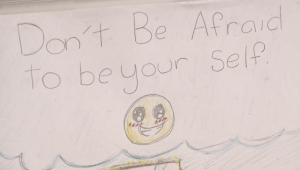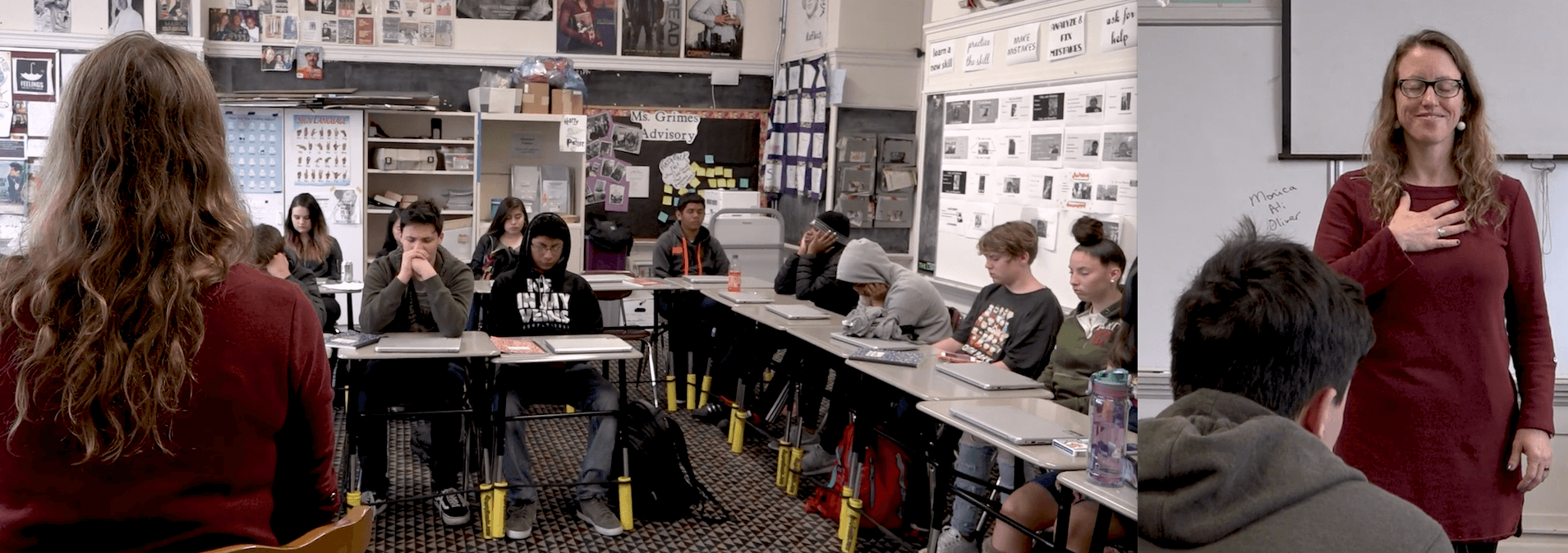Embarrassingly, I almost missed my very first week of school during my first year of teaching.
Nervous with anticipation over all that I was about to embark upon and deeply wanting to demonstrate my care for my incoming students by doing all I could for them, I very nearly drove myself into the ground. Up early, up late – I felt certain that if I could just get all of the things done, my class and I would be okay. By the time my students arrived, nervous and excited themselves, I was depleted, exhausted, and crawling my way through that first week of my first year.
I learned a lot that year, of course. But every August, when my attention is drawn to a new school year, my stomach seems to jump up into my throat, and my brain decides that it knows the answer. It’s always to do more.
Many of us in education encounter the dreaded “back-to-school” nightmares in which we, the teacher, are revealed to be woefully underprepared. In those anxious dreams we suddenly find that our worksheets aren’t photocopied, we have forgotten our classroom keys at home, and we might have even forgotten to get dressed before arriving at school! “Not ready, not ready, not ready” the dreams seem to say, and “do more, do more, do more” is what the mind often decides is the antidote.
Doing vs. Being
In my first few years of teaching, I followed all the rules. My teaching credential program had taught me quite a lot about all the things good teachers do, so I did them. In my free time, I read about what good teachers did, and I tried to do those things too. But in those first years, I hadn’t heard a lot about how a good teacher was supposed to be.
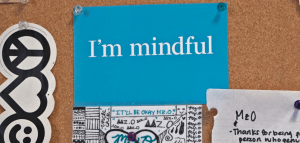
I became a teacher because it was what I always knew that I wanted to do. But on a much deeper level, I became a teacher because it was what I always felt that I wanted to be. Throughout my career of working with students, an essential question has emerged. Do I want to create a classroom where my students and I are oriented towards doing, or one where we’re deeply engaged in discovering how and who we want to be?
How, then, can we shift our focus from doing to being?
The ideas here around doing vs. being might sound abstract, but practice allows all that you do to become imbued with that deep sense of being. Here are a few ideas and practices that can support your own ways of being and bring a sense of your own embodiment into the classroom.
3 ideas for your personal practice
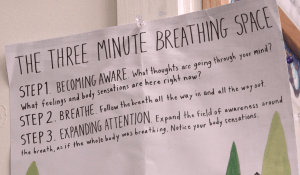
1. Set a Morning Intention
Here’s a simple intention I often return to: “My goal for today is NOT to get everything done. My goal today is to really BE with my students.”
2. Engage in Radical Self Care
As educators, our job is to be there for our students, but if we neglect to take care of ourselves we will be unable to be fully present for those around us or responsive to the challenges of the school day. Here are ways you can practice radical self-care.
- You need sleep. You have to. Sleep.
- Eat healthy snacks during the day. It’s simple. But it’s not easy!
- Connect with other adults during your day – consider starting a Happy Teacher Lunch, or a “stone soup” style salad potluck for teachers once a week.
- Work on building your “just say no” muscle. It is okay to recognize your own human limits and to set boundaries with compassion.
3. Post Inspirations in Your Room that Focus on Being
Like integrating Mindful Rituals, it can be useful to remind everyone in the classroom to focus on being over doing. Some examples are as follows:
- “In this room, who we are matters.”
- “We are a community of (free thinkers, critical thinkers, kind kids, etc.)”
- “Doing isn’t as important as being.”
- “In this room, we take care of ourselves, each other, and this place.”
- “This room is a safe space for every one of us and all of each of us.”
6 practices to do – in front of your students
Remember that your nervous system is the intervention in the classroom and that your students will look to you to know what is acceptable or allowed in your classroom. Your students look to you to determine if your room is a place where it is safe for them to “be”. These practices will also help create a more equitable classroom, where students begin to understand that everyone in the room is learning and growing, including the teacher!
1. Practice “Teacher First” Sharing
Any time you ask students to share something personal about themselves (either in writing or in discussion), use a “Teacher First” practice. This means that if you ask something of your students, you share your own answers first. This practice not only gives students an example of what to do, it also models ways of being open, self-reflective, and vulnerable.
2. Be Open with Your Students
Look for ways to demonstrate your own honesty or vulnerability in the classroom every day.
3. Own Your Mistakes
Everyone makes mistakes. It’s part of being human! Make mistakes in the classroom and point them out to your students every day.
4. Model Emotional Awareness
When you get flustered in the classroom, name your emotions.
5. Take a Pause
Anytime you get overwhelmed by the doing in the room, pause the room, take a visible deep breath and let your students watch you come back to your sense of being.
6. Just Be with Your Students
Find (and create!) moments for you to practice “authentic being” with your students.
- Share a funny story from your weekend, and then ask for stories from your students.
- Play your favorite music in the classroom, and let them make song requests.
- Talk about the (funny, sad, serious) current events that are happening in the world and how they are affecting you. Let your students share how those events are affecting them too.
After years of making this gradual shift in my approach to teaching, I began to see a sense of safety that began to open my classroom up to much more rich opportunities to learn, connect, share, and engage – together. Students laugh more and nod off in class less. Not only has my attendance gone up, but students from other classrooms are often trying to sneak in! And, of course, when students are allowed to bring more of themselves into the room, their academic achievement improves as well.
The above practices can help to create a deeper state of embodiment for the teachers who utilize them. It’s no surprise that teachers who have the strongest sense of embodiment are those who make the most impact – these teachers are the ones we remember, not for the things they did, but for the felt sense we had of their unique ways of being.
I wish you a beautiful start to the school year – may you enjoy being… and being together with your students!
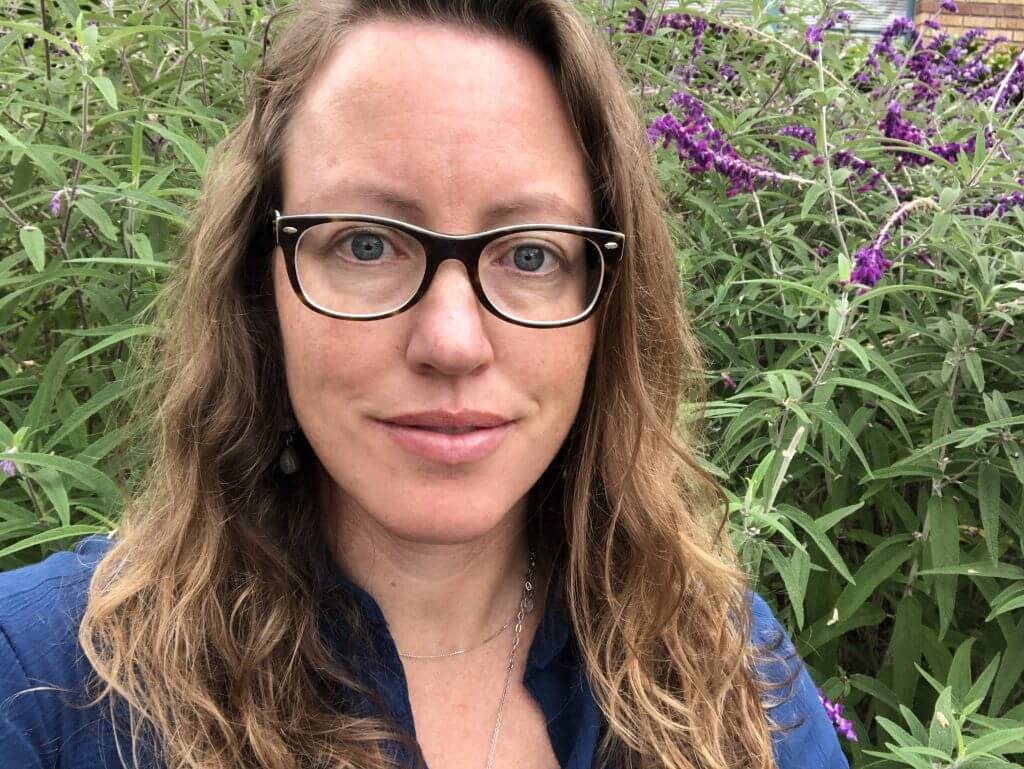
You can watch short videos “I Am Mindful” and “Arrive” to see how Kory brings mindfulness into her classrooms.

